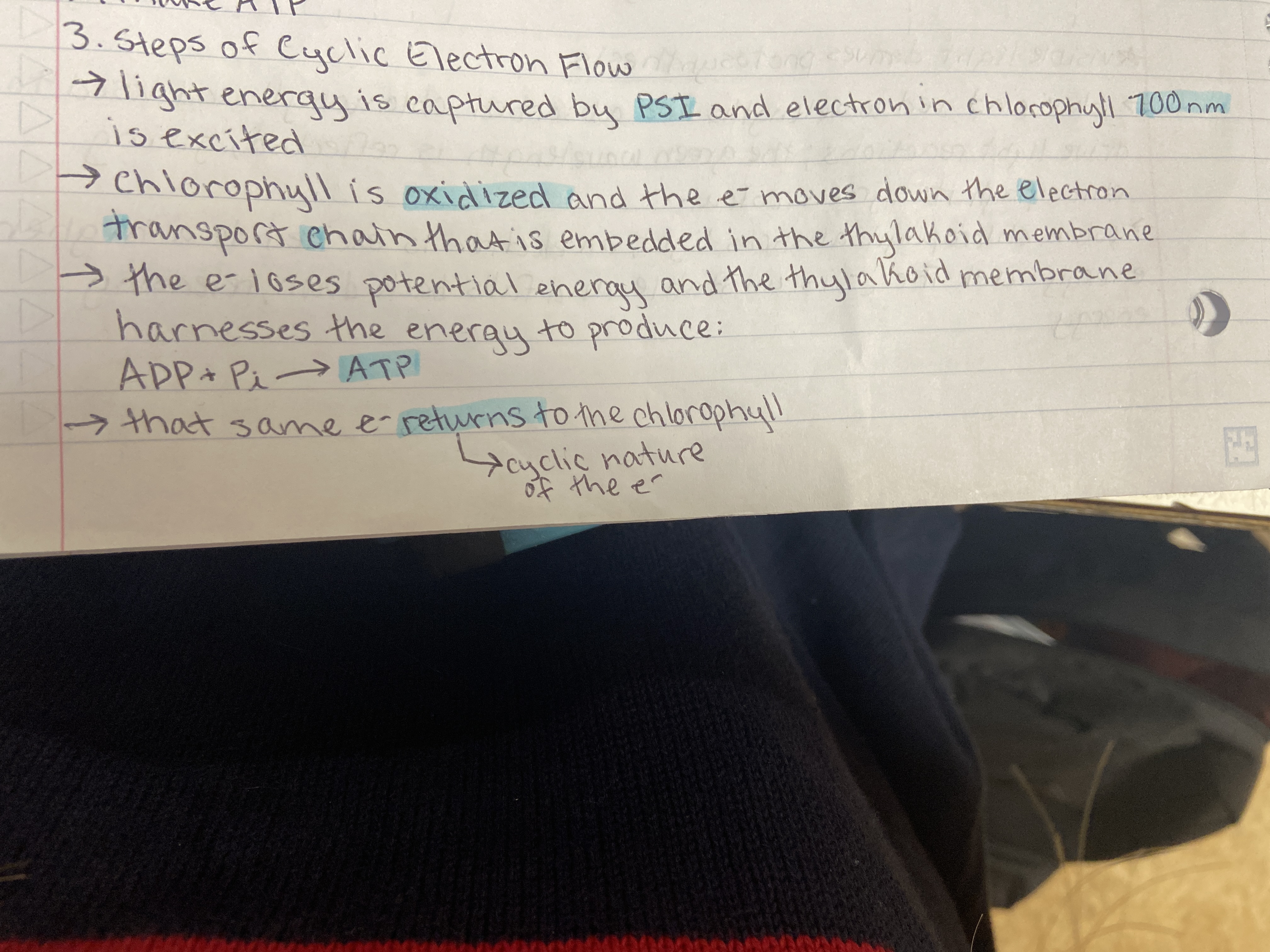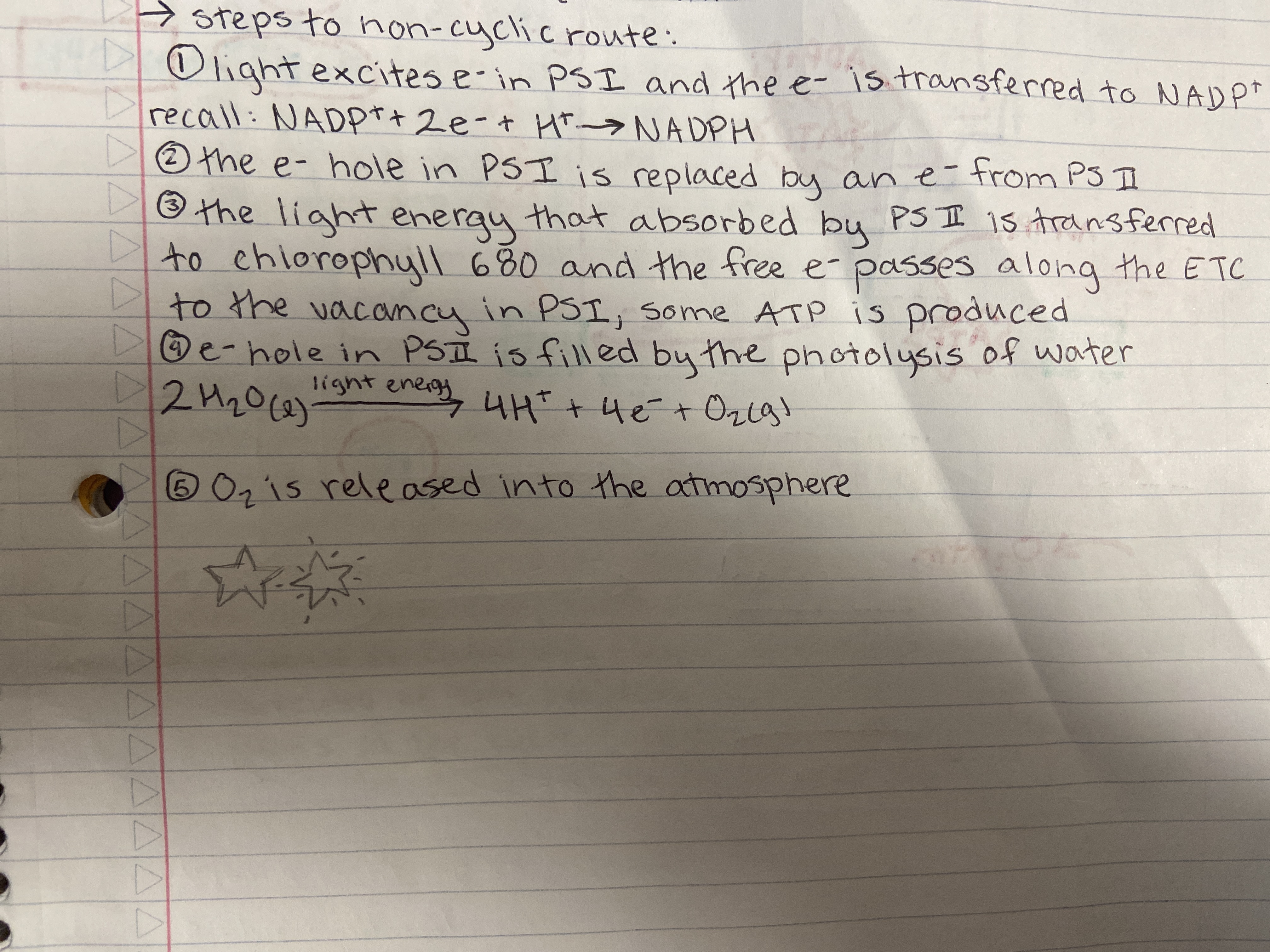Photosynthesis- bio 20
5.0(1)
Card Sorting
1/23
There's no tags or description
Looks like no tags are added yet.
Study Analytics
Name | Mastery | Learn | Test | Matching | Spaced |
|---|
No study sessions yet.
24 Terms
1
New cards
6CO2+6H2O—>
6O2+C6H12O6
2
New cards
structure of the chloroplast
Membrane bound. Contains flattened membrane bound sacs known as thylakoids. A stack of thylakoids is called a granum
3
New cards
Where do light dependant reactions occur
In the thylakoid membrane
4
New cards
Where do light independent (c.b cycle, dark) reaction occur
The stroma
5
New cards
Imputs of LD reaction
Sunlight, water, ADP+Pi, NADP+
6
New cards
What does photo system 2 produce
ATP and 02
7
New cards
What does photosystem 1 produce
ATP and NADPH
8
New cards
LI reactions imput
ATP,NADPH,CO2
9
New cards
LD reaction produces…
PGAL→glucose, ADP+ Pi, NADP+
10
New cards
light waves: the greater the wave…
The less energetic the wave is
11
New cards
Blue and red wavelengths are
Absorbed and used to drive LD reactions
12
New cards
Green wavelengths are…
Reflected which gives chlorophyll its green colour
13
New cards
When chlorophyll absorbs light…
An electron is excited to a higher energy level. The electron is unstable and falls back down, releasing energy
14
New cards
What happens to chlorophyll when the primary electron acceptor traps an electron
Chlorophyll is oxidized and the e- acceptor is reduced
15
New cards
Wave lengths of the photosystems
PS1: 700nm PS2: 680nm
16
New cards
Which PS does Cyclic electron flow use
PS1
17
New cards
Steps of cyclic electron flow
\

18
New cards
Non cyclic electron flow uses
PS1 and PS2
19
New cards
Steps of non cyclic flow

20
New cards
The three stages of dark reaction
1. Co2 is fixed to RuBP which forms an unstable 6c molecule
2. The 6c molecule splits into two 3c molecules called PGA
3. PGA uses ATP as an energy source to remove hydrogen from NADPH, a new molecule (PGAL) is formed
21
New cards
Fates of PGAL
1. Used as an energy source
2. Combine with other PGAL to form glucose
3. Recycled to replenish RuBP
22
New cards
How many turns of the Calvin benson cycle does it take to produce 1 molecule of PGAL
3 turns (1CO2 used in each cycle)
23
New cards
What happens to the other 5 molecules of PGAL
Recycled to produce RuBP
24
New cards
How many turns of the Calvin benson cycle does it take to produce 1 glucose molecule
6 turns